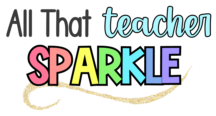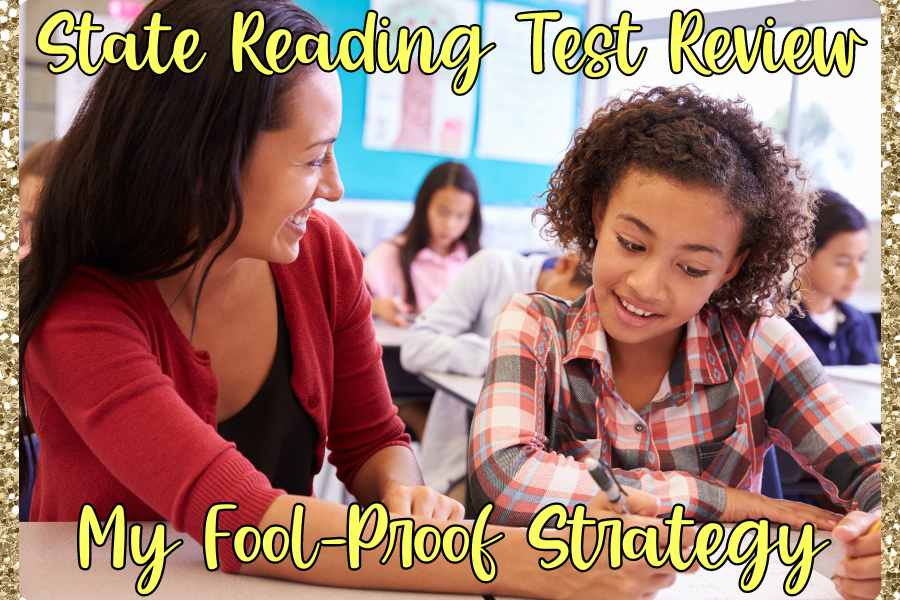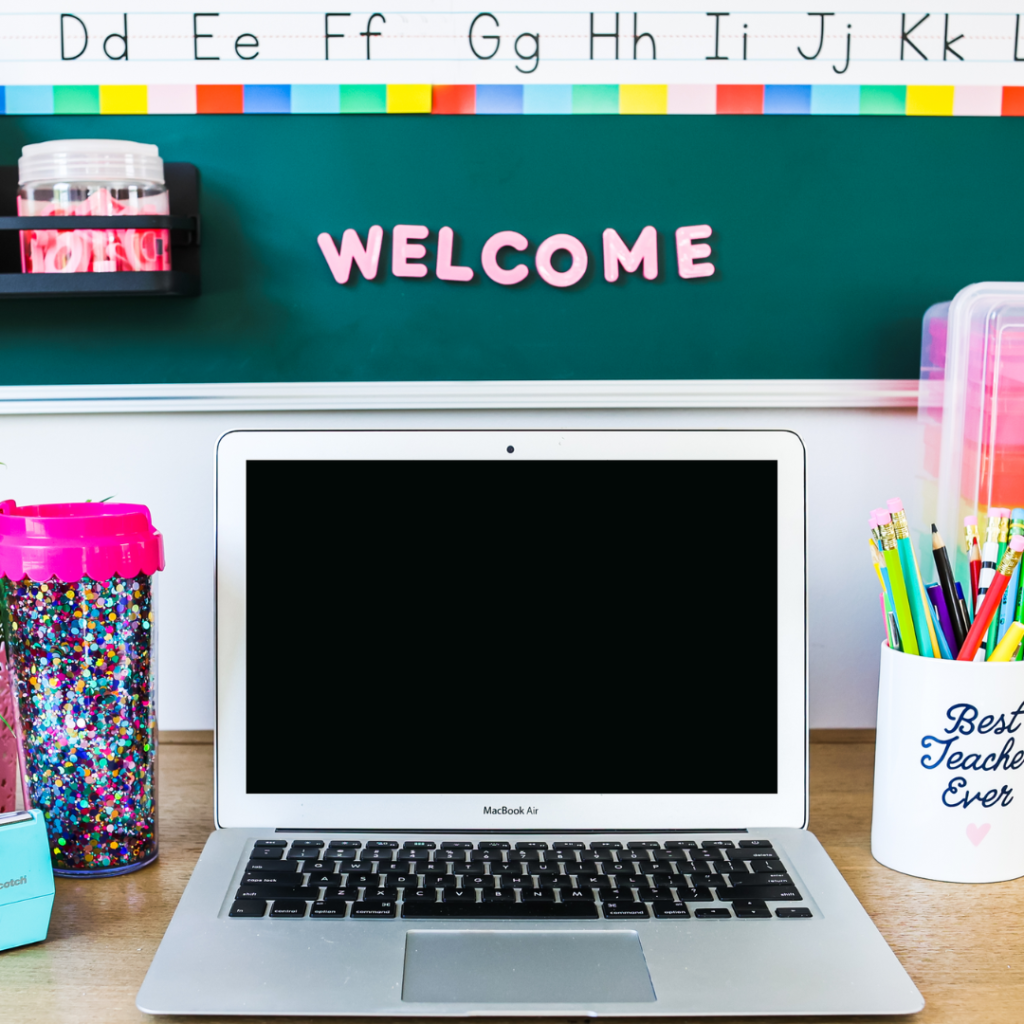Trying to review for the State Reading Test can be so stressful and overwhelming! As a classroom Reading teacher for 19 years, I know exactly how you feel and want to share all the things I’ve learned over the years to help teachers like you make Test Prep easier!
I’ve already shared how I lessened student Test anxiety, but now that your kids are feeling more confident, it’s time to prep your kids for the actual Reading Testing itself. How? By teaching them what to expect on the Test and how to take it! Read on for my step-by-step strategy on how I practiced Reading passages together as a class to review for the State Reading Test.
Why should we practice taking Reading Tests together?
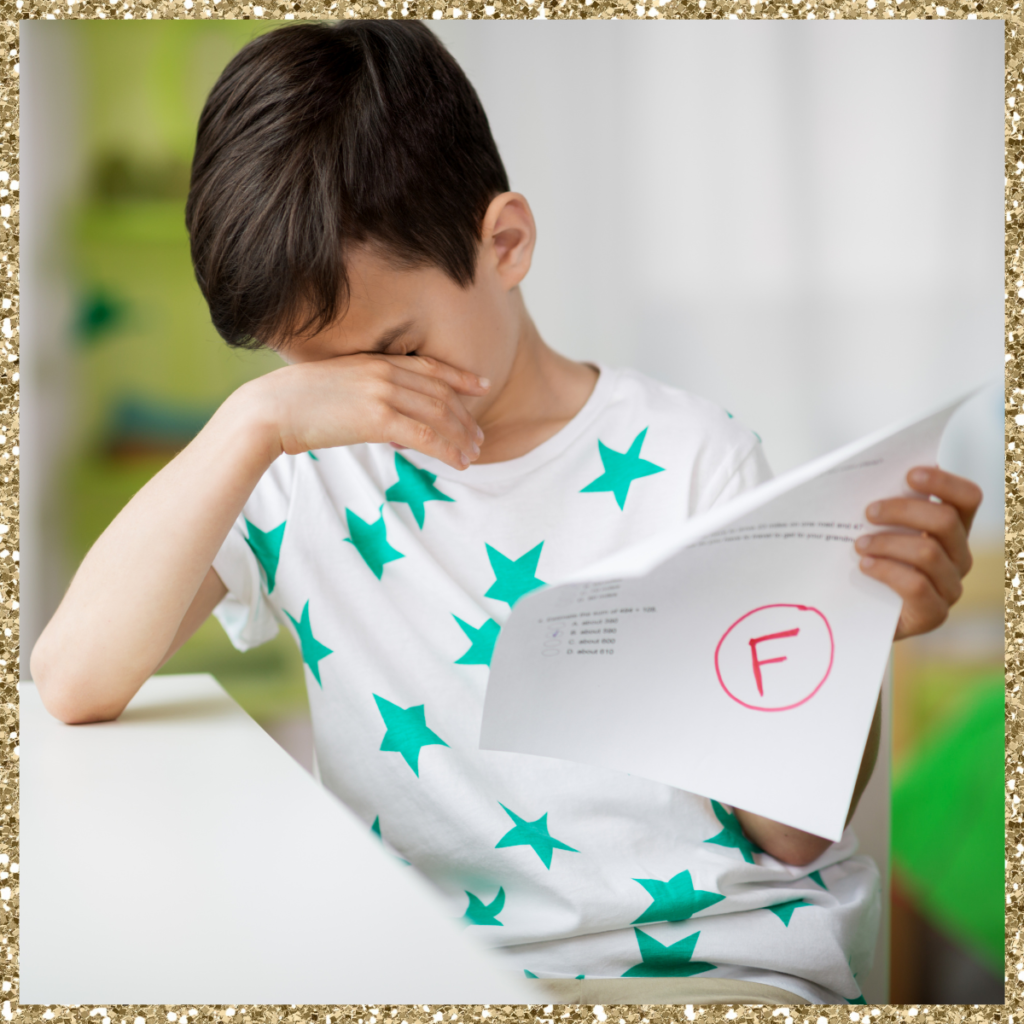
About 8 years into my teaching career, I had an eye-opening experience with a student. He always made A’s and B’s in Reading, but he ended up not passing our End of Grade Test (EOG).
He was crying and confused (and I was surprised too!) because he knew the material but didn’t pass. After talking to him and reassuring him that he would pass 4th grade, I started delving into what could have happened.
Yes, he had Test Anxiety, so that definitely factored in. We reviewed for the test and he was paying attention and participating in the review.
But it wasn’t until another student who also did well in class but didn’t pass said something that changed the way I looked at reviewing for the Reading Test. He said, “If that test hadn’t given answers that all sounded right, I know I would have passed!”
Preparing your students evens the playing field!
And that’s when I realized the Test wasn’t playing fair. Ok, so I had already known that before, but I got really mad at how the Test is designed to trick our students! The next year, I got out the same released versions of the Test that I had always used, but this time we worked through the Test aloud together as a class. It’s one thing to review answers after they’ve taken a test on their own. It’s quite another to actually work through the answers working as a team!

As we read every story, every question, and every answer choice together, I was astounded at the conversations we were having! I saw how certain questions confused my students. Two answer choices sounded correct except for one tiny difference. Vocabulary words they didn’t know kept them from understanding a question or answer choice.
Working together was a game changer and allowed me to keep teaching while we reviewed. I could model my thinking and test taking strategies and students could pick up their own good Testing habits!
Review for the Reading Test by modeling how to take a Test
First off, in all transparency, this isn’t the first time I model for my students how to take a test. Throughout the year (beginning in September), I use reading EOG style passages and questions to review the standards I am teaching and talk my students through what they should be doing. If this is new for you, that’s ok! Even just 3 weeks of practicing the “right way to take a test” is going to help your students!
Read the story and annotate

Begin by posting a Reading passage and questions from a released version of the Test for everyone to see (Smartboard, Screen Cast, etc…). Read the story aloud making comments and connections as you read.
Write down everything that you say, making notes in the margins or in between lines. Tell your students that writing connections and comments will help you (and them) understand the story better.
Students should write their own comments and connections on their testing paper (or blank paper) as you are reading the story. You want students to read the story carefully and show their comprehension through the notes they make. Getting into the habit of annotating stories will help students do this on their own during the real Reading test.
Highlight important words in each question

Once the story is finished, ask students to read the first question out loud with you and underline important words. This will help them understand what the question is really asking.
They might even substitute words or phrases in the question for what they know the words/phrases mean. (EX- “story mostly about” is secret code for “Main Idea”! “Supports” means “proves”!)
I often times add notes by the questions and encourage my students to do the same! This will help them remember important information about the question so they have a better chance of answering it correctly!
How to answer “Right Here” Questions
If the question has an answer that can be found “right here” in the text (simple comprehension questions), model answering the question first without looking at the answer choices (cover them up if necessary!).

Ask students for their input. If there is uncertainty or any question about what the answer is, model looking back in the text, finding the answer, and underlining it in the text.
Did you notice that we still have not read the answer choices yet? When students know the correct answer on their own first, they can avoid getting confused or tricked into picking an incorrect answer.
Now that students are confident they know the correct answer, go back to the answer choices and, starting with D and working your way up to A, read each answer choice.
Tell students to find the answer choice that matches the correct answer in their head. If the answer choice they read doesn’t match what they know is incorrect (or mean the same thing), mark it out!
Explain that this trick of marking out incorrect answers keeps them from accidentally choosing an answer they didn’t mean to pick. I know it sounds crazy, but students accidentally mark the wrong answer a lot more than you would think!
How to answer “The Story Didn’t Say” Questions
If the answer can not be found in the text because “the story didn’t say”, then tell students they will have to infer the answer. This means their brain has to figure out the answer based on evidence they found in the text.
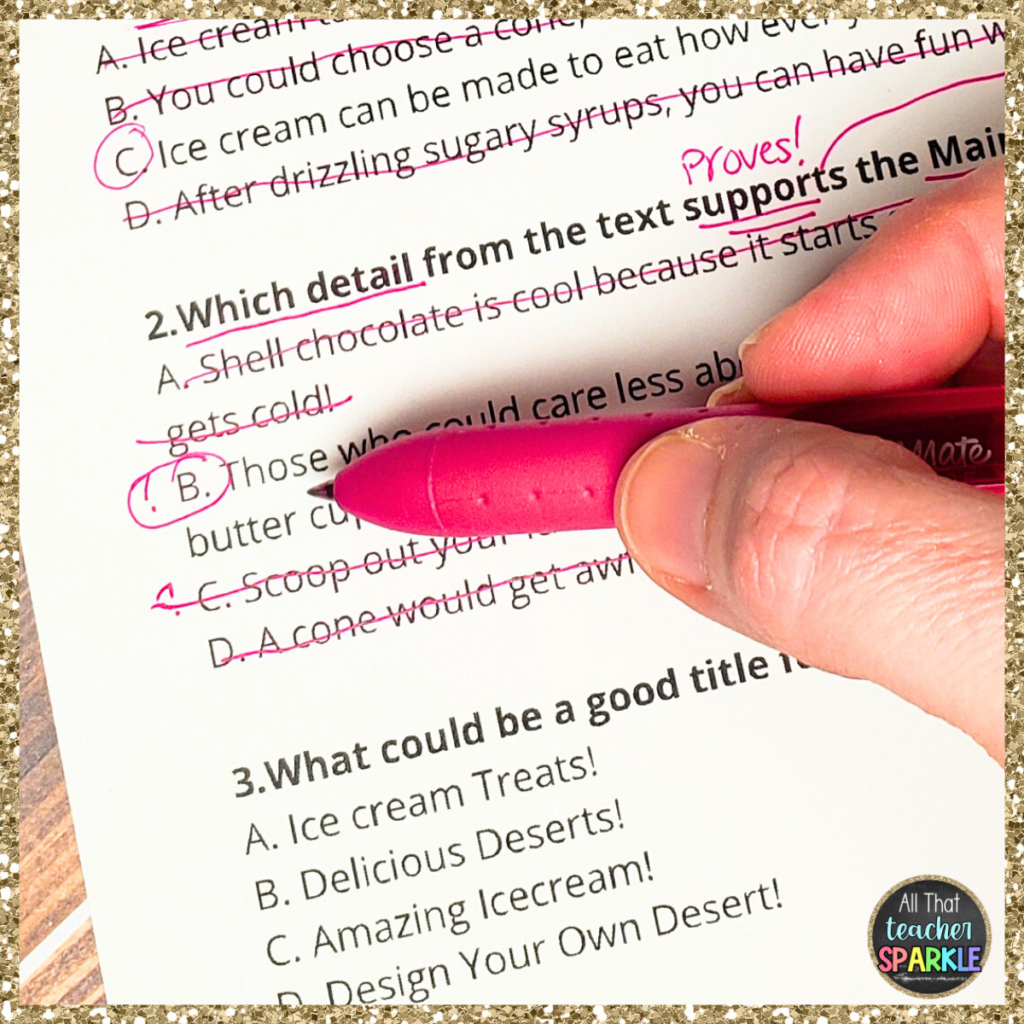
Model reading each answer choice (from D up to A so students don’t accidentally forget to read all the way down) and reasoning through the choices.
The answer will not be word for word in the text, but model referring back to the text for evidence that will support one of the answers.
Remind students to cross out the answers they are sure are wrong, but “leave it for now” if the answer could be right.
If students read all 4 choices and find themselves stuck between 2, advise them to pick the one that they feel has more evidence from the story or that they just feel better about. Spending too much time deciding between 2 answers could cause students to lose confidence. Pick one and move on!
Explain to your students not to freak out if they aren’t 100% sure of an answer they made an educated guess about. If students get upset during the test, it will cause them to lose confidence and miss upcoming questions they probably wouldn’t have missed if they had just stayed calm.
Watch out for “Testing Tricks”!

As you continue working, direct students to use the step-by-step process explained above for each question. Point out how the “test makers” purposely try to trick students by giving answer choices that:
- “sound right”, but are based on student prior knowledge- not supported by text evidence
- are specific details that come straight from the text but don’t actually answer the question
- use unfamiliar vocabulary that has similar meaning to other words used in the story
Use this fun graphic on my Instagram page to share these “tricks” with your kids! When students know to be looking for them and you all have practiced finding correct answers together (despite these tricks), they are less likely to be fooled! Students begin to feel confident and empowered!
Teach students to slow down!
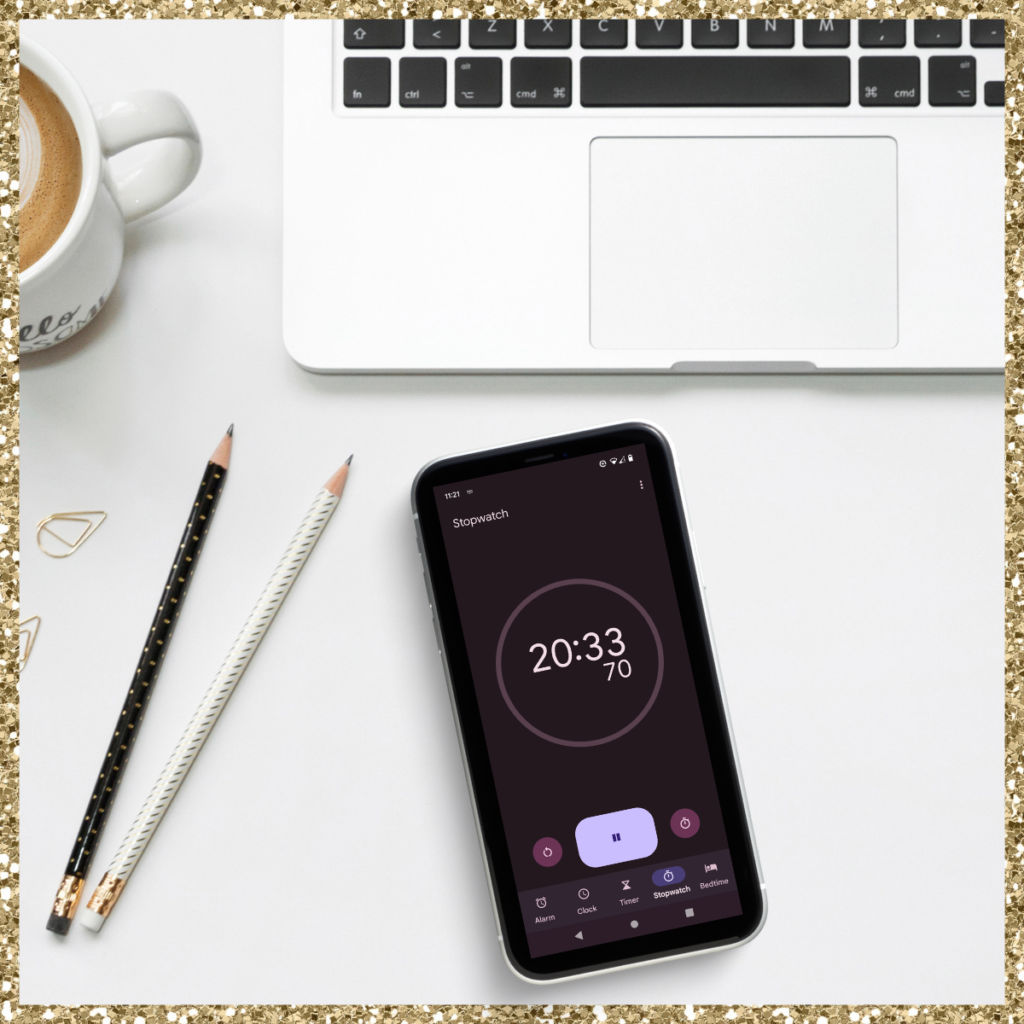
Now, my little “Teacher Trick” that I didn’t mention in the beginning? I had a stopwatch timing how long it took us to complete one story and its questions- from start to finish! Your students will be shocked to see how long they worked and illustrates the point I want to make.
If I as the teacher took 20-30 minutes to read and complete questions for one story, then they as the students shouldn’t finish a story and questions in 5 minutes or less!
I know we stop and talk as a class and most students won’t take that long on the real test. However, this clearly shows your students that taking their time helps them read more carefully and answer questions more thoughtfully. They can also avoid careless errors that could cost them a passing score.
Feeling better about how to review for the State Reading Test?
You now know my step-by-step process to teaching your students the “right way” to work through a reading passage! Does that help reviewing feel less overwhelming? I hope so! Just continue practicing together a few times a week to help your students feel a little more comfortable about how to tackle the test!
For more helpful tips on how to review for the State Reading Test, check out this post with 4 more effective ways to Review for the End of Year State Reading Test! See you then!
Pin This Post on how to Review for the State Reading Test!
There was a lot of information to digest in this Post! Save it to your favorite Teacher Pinterest Board so that you can come back and read it again later!
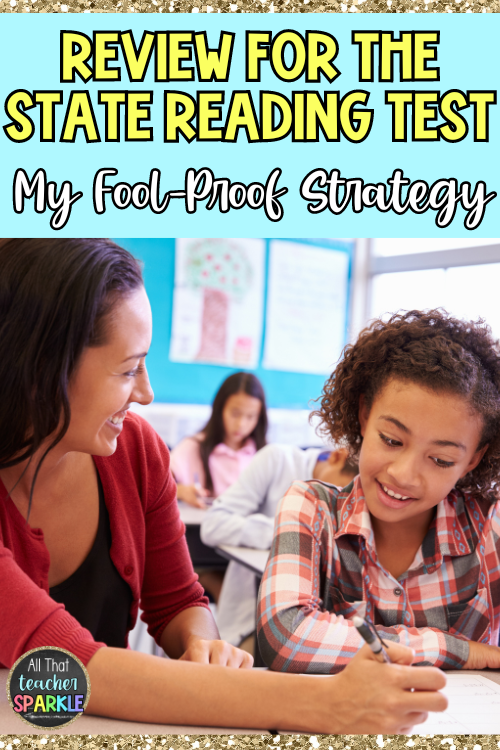
If you ever need me, I’m here for you! Teacher Sparkle always grows when it has other Teacher Sparkle to bounce ideas off of! ❤️

